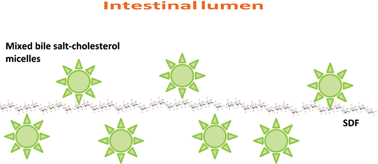Mechanisms underlying the cholesterol-lowering properties of soluble dietary fibre polysaccharides
Abstract
A number of studies have shown a positive relationship between diets rich in soluble dietary fibres (

* Corresponding authors
a
Centre for Nutrition and Food Sciences, The University of Queensland, Hartley Teakle Building, St Lucia, Queensland, Australia
E-mail:
m.gidley@uq.edu.au
Fax: +61 7 3365 1177
Tel: +61 7 3365 2145
A number of studies have shown a positive relationship between diets rich in soluble dietary fibres (

 Please wait while we load your content...
Something went wrong. Try again?
Please wait while we load your content...
Something went wrong. Try again?
P. Gunness and M. J. Gidley, Food Funct., 2010, 1, 149 DOI: 10.1039/C0FO00080A
To request permission to reproduce material from this article, please go to the Copyright Clearance Center request page.
If you are an author contributing to an RSC publication, you do not need to request permission provided correct acknowledgement is given.
If you are the author of this article, you do not need to request permission to reproduce figures and diagrams provided correct acknowledgement is given. If you want to reproduce the whole article in a third-party publication (excluding your thesis/dissertation for which permission is not required) please go to the Copyright Clearance Center request page.
Read more about how to correctly acknowledge RSC content.
 Fetching data from CrossRef.
Fetching data from CrossRef.
This may take some time to load.
Loading related content
